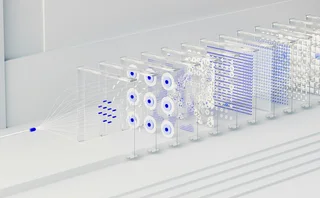Sell-Side Technology Awards 2020: Best Sell-Side Market Risk Product—Qontigo

Recently formed Qontigo’s second win in this year’s Sell-Side Technology Awards is for the best sell-side market risk product and comes courtesy of the firm’s Axioma Factor-based Fixed Income Risk Model. The model is designed to help users manage risk and portfolio construction functions and provide fixed-income investing insights to sell-side strategy teams. It updates fixed-income risk factors on a daily basis and is part of Qontigo’s Axioma Fixed Income Solutions Suite, which also includes the Axioma Fixed Income Spread Curves and the Axioma Granular Fixed Income Risk Model.
“Axioma came from pre-Qontigo days,” says Ian Lumb, managing director at Qontigo. “Years ago, we started selling optimization software to the finance community, so we have a lot of clients that are already familiar with our optimization tools and are using them to construct portfolios.”

According to Lumb, it made sense for the company to develop a product that could operate alongside its existing optimization tool. The model Qontigo created can be distributed as a flat-file factor model and can interoperate with other optimization tools or users’ own asset allocation software or code. Qontigo has also been working on integrating the product with its optimization tools through Microsoft Azure.
Lumb explains that liquidity across fixed-income markets has decreased steadily over the course of the last decade, which has impacted fixed-income traders by way of making reliable liquidity more difficult to source, affecting the quality and likelihood of their executions. “All of these knock-on impacts from the global financial crisis have meant that day-to-day transparency and liquidity and the prices you observe on-screen, aren’t necessarily as real as you think they are,” he says.
Lumb advises market participants to be skeptical when large data vendors roll out complex, evaluated pricing models, because, he says, the prices they see on their screens or in a back-office feed that appear to have moved from the previous day might lead them to believe they are “true,” when in reality many have not actually changed, or there has been some matrix pricing. “When you dig down and try to build a curve or a risk factor from that input, you end up getting noise, not signal,” he says.
Only users who have a paid subscription or are part of a corporate subscription are able to print or copy content.
To access these options, along with all other subscription benefits, please contact info@waterstechnology.com or view our subscription options here: https://subscriptions.waterstechnology.com/subscribe
You are currently unable to print this content. Please contact info@waterstechnology.com to find out more.
You are currently unable to copy this content. Please contact info@waterstechnology.com to find out more.
Copyright Infopro Digital Limited. All rights reserved.
As outlined in our terms and conditions, https://www.infopro-digital.com/terms-and-conditions/subscriptions/ (point 2.4), printing is limited to a single copy.
If you would like to purchase additional rights please email info@waterstechnology.com
Copyright Infopro Digital Limited. All rights reserved.
You may share this content using our article tools. As outlined in our terms and conditions, https://www.infopro-digital.com/terms-and-conditions/subscriptions/ (clause 2.4), an Authorised User may only make one copy of the materials for their own personal use. You must also comply with the restrictions in clause 2.5.
If you would like to purchase additional rights please email info@waterstechnology.com
More on Awards & Rankings
AFTAs 2025: Best data provider—Allvue Systems
Product: Private Credit Intelligence
AFTAs 2025: Best IT team—TCW Group
Team: TCW Group’s Investment Technology Team; Project: Engineering Solutions—ABF and insurance launches during Aladdin stabilization
Buy-Side Technology Awards 2025 winner’s interview: 73 Strings
73 Strings’ win in the BST Awards 2025 Best middle-office platform category
AFTAs 2025: Most cutting-edge IT initiative—J.P. Morgan
Project: Vida Beta One
Buy-Side Technology Awards 2025 winner’s interview: S&P Global Market Intelligence
S&P Global Market Intelligence’s success in the first year the Best private markets data provider category has been on offer.
AFTAs 2025: Most innovative third-party technology vendor (operations)—AutoRek
Company name: AutoRek



